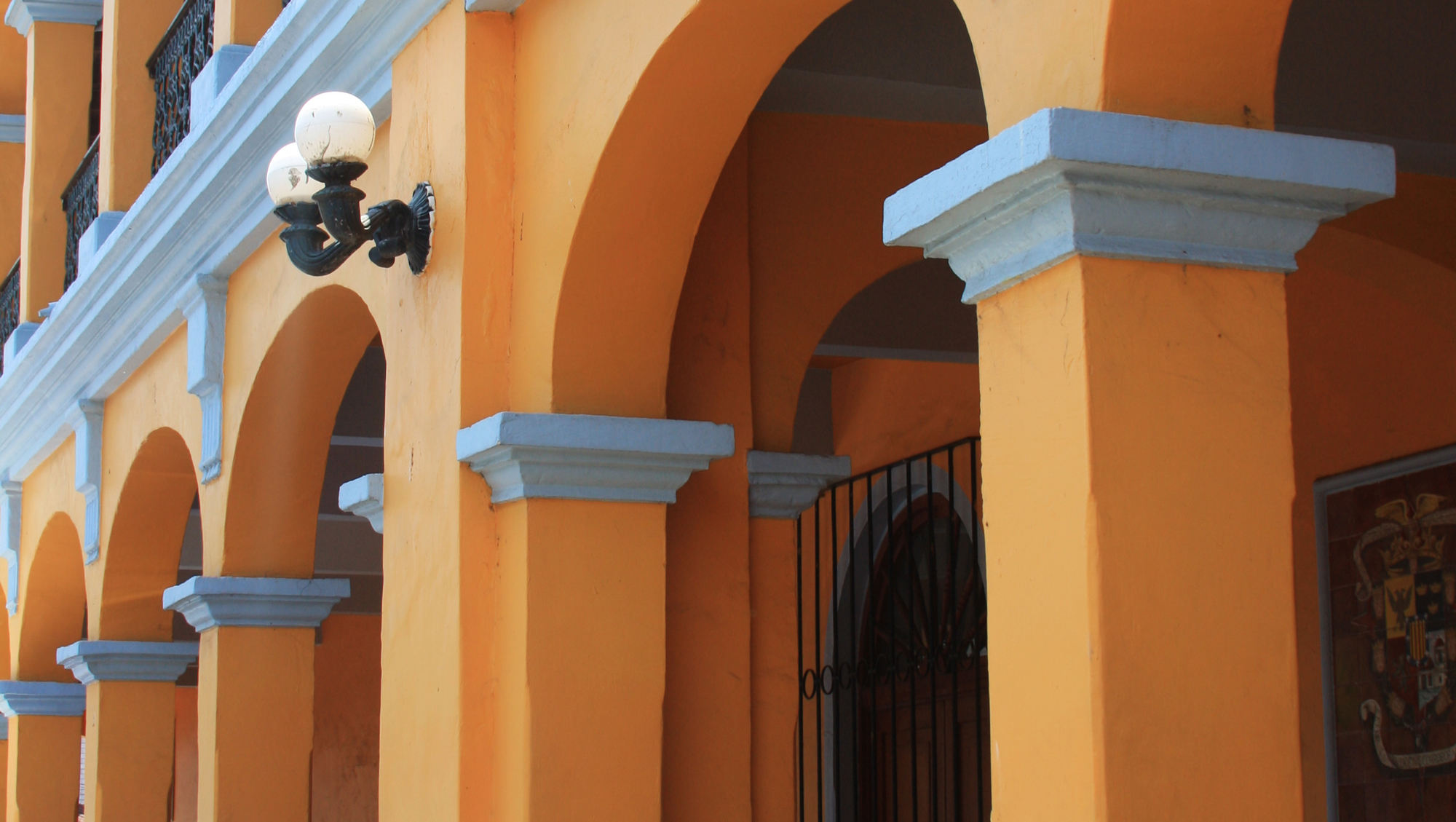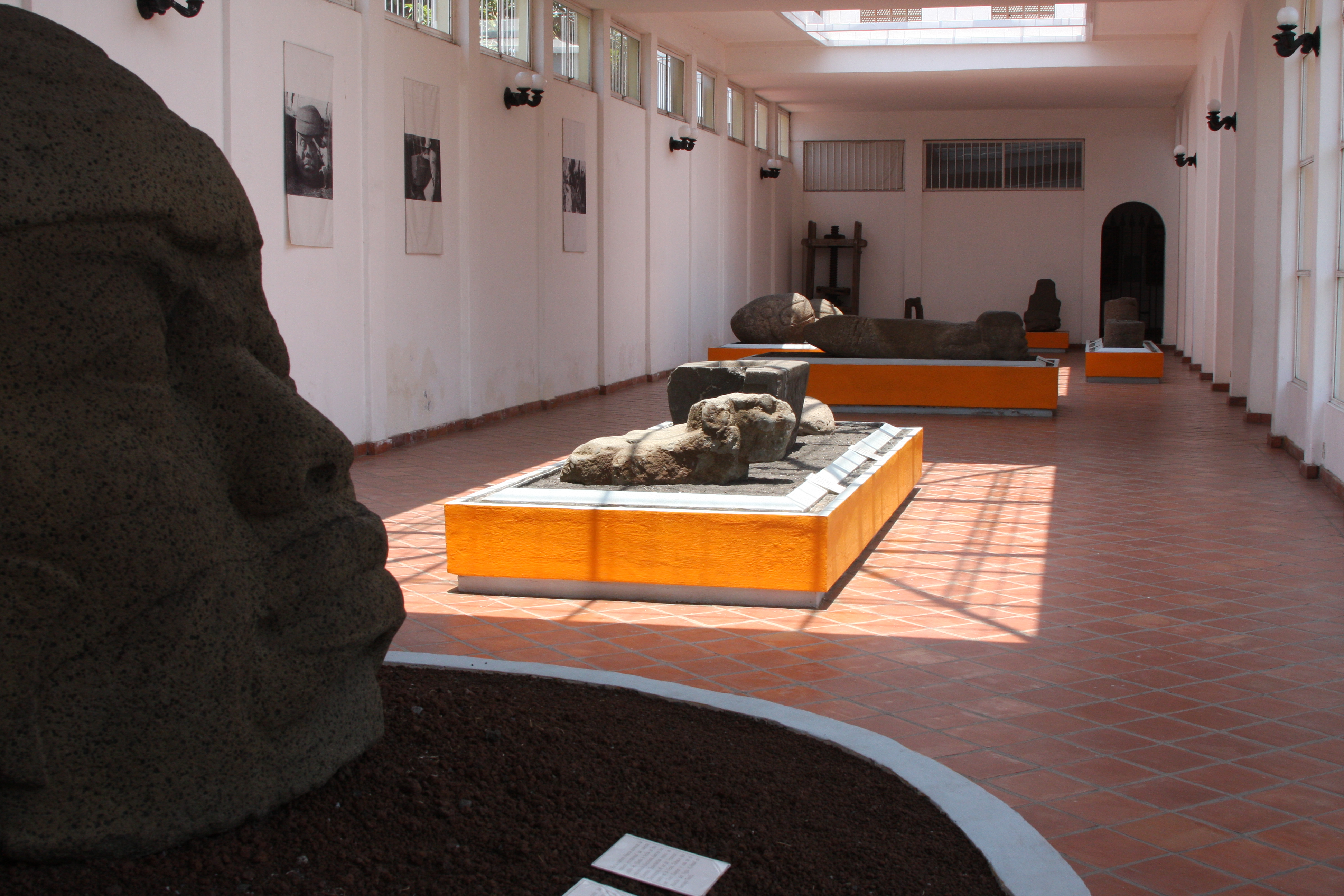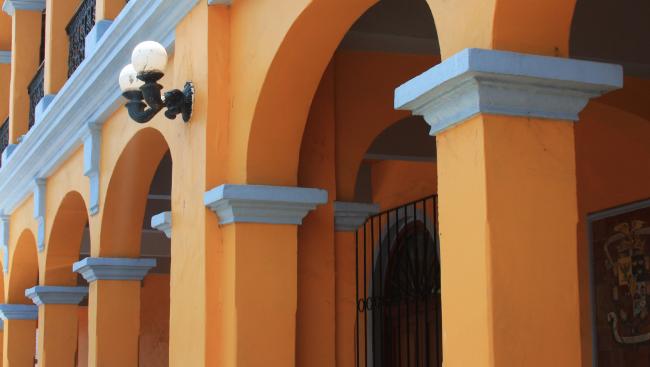The museum conserves important pre-Hispanic pieces and primary sources for Mexican history during the viceregal period. It was established for the display of a very small archeological collection in the 1950s, in a small space in the old town hall dating back to 1873. The museum expanded to occupy the whole building with the help of the Papaloapan Comission (today the Papaloapan Development Council) in 1973, while the collection grew with pieces from the National Museum of Anthropology and from the Xalapa Anthropology Museum. The highlights include the clay sculpture of Cihuateteo, the pre-Hispanic female spirit, which was unearthed in the excavations of El Zapotal, as well as a polychrome pot from Casas Grandes and a colossal head from La Cobata. The exhibition was managed by Román Piña Chan and Íker Larrauri on behalf of INAH, Alfonso Medellín for Xalapa Museum and by Fernando Bustamante Rábago on behalf of the municipality of Santiago Tuxtla.
Between 1988 and 1992 the facility underwent a renovation to include an auditorium. A library, offices and ethnographic gallery were also added. A comprehensive overhaul was proposed once again with the support of the Papaloapan Development Council. It incorporated material from the Teotihuacan enclave of Matacapan and the sites of Bezoapan and La Joya, as well as the collections of wooden busts from El Manatí. A history gallery was also inaugurated featuring the Marquisate of the Valley of Oaxaca, since Santiago Tuxtla formed part of the estates of Hernán Cortés, and it was here that he built the continent’s first wine press.
The museum today consists of four galleries and the archeological collection has grown to 300 pieces. The exhibits include human torsos made from wood, smiling figurines, Isla de Sacrificios (Island of Sacrifices) style pots, big-nosed gods, yokes and musical instruments. The New Spain Gallery has important sources on the history of Mexico generally, but particularly on the region, such as documents on the sale of Hernán Cortés’ goods, navigation instruments, reproductions of ships and weapons from the time of the conquest, viceregal furniture and copies of caste paintings, as well as two seventeenth-century items: a painted wooden cross and a wooden estofado sculpture of Santiago Caballero.









